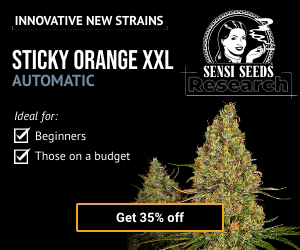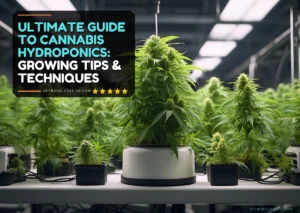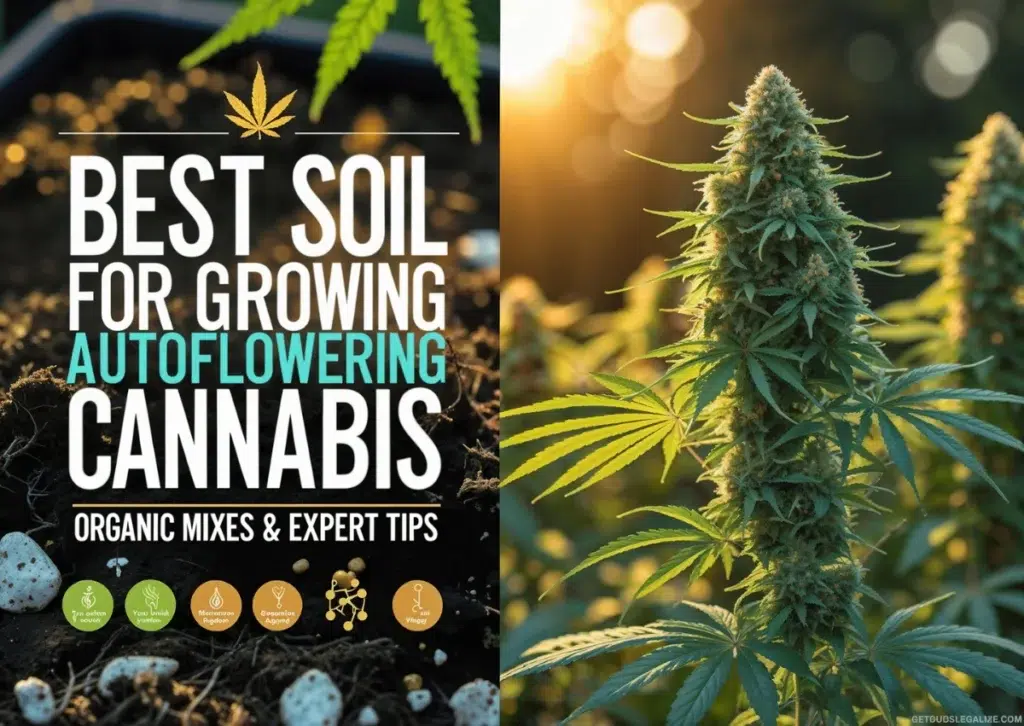A Comprehensive Guide to Hydroponic Growing Media: Weighing the Pros and Cons
Hydroponic gardening has revolutionized the way we grow plants, offering efficient, space-saving, and water-conserving alternatives to traditional soil-based methods. One of the critical components of a successful hydroponic system is the growing medium. Choosing the right growing medium can significantly impact the growth, health, and yield of your plants.
In this guide, we’ll delve into the different types of growing media used in hydroponics, exploring their pros and cons to help you make an informed decision.
Qualities of an Ideal Grow Medium:
Before delving into the different choices available, let’s describe the qualities of an ideal growing medium for hydroponic systems:
- Aeration: Adequate oxygen supply to the plant roots is crucial for healthy growth. An ideal medium should provide ample aeration to prevent root rot and promote optimal nutrient uptake.
- Moisture Retention: While it’s essential for the medium to provide oxygen, it should also retain moisture to ensure consistent hydration of the plant’s roots. Maintaining an appropriate moisture level is vital for plant health and growth.
- Nutrient Retention: The medium should have the capacity to hold and deliver nutrients effectively to the plant roots. This ensures that plants receive a steady supply of essential elements for robust growth and development.
- pH Stability: A stable pH environment is critical for hydroponic systems to prevent nutrient imbalances and maintain plant health. The medium should have a neutral pH or the ability to buffer pH fluctuations effectively.
- Reusable and Sustainable: Ideally, the medium should be reusable to reduce waste and promote sustainability in hydroponic gardening. Reusable mediums also offer cost savings in the long run.
- Versatility: Different plants have varying requirements, so an ideal medium should be versatile enough to accommodate a wide range of crops and growing conditions.
1. Perlite
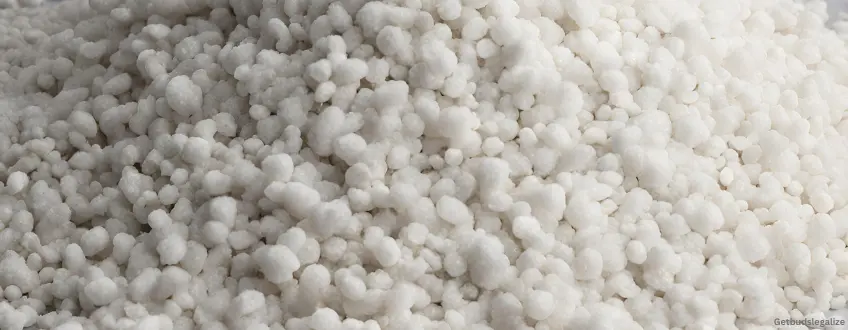
What is Perlite?
Perlite is a naturally occurring volcanic glass that expands when heated, resulting in a lightweight, porous material that is commonly used as a growing medium in hydroponic systems.
Benefits:
- Reasonably Inexpensive: Perlite is cost-effective, making it accessible to hydroponic growers on a budget.
- Lightweight: Its lightweight nature facilitates easy handling and maneuverability within hydroponic setups.
- High Air Retention: Perlite provides excellent aeration to plant roots, promoting healthy growth and oxygen uptake.
- Reusable: Perlite can be reused multiple times, contributing to sustainability and cost-efficiency in hydroponic gardening.
Downsides:
- Not Suitable for Certain System Types: Due to its lightweight nature, perlite may not be ideal for systems requiring heavier support for plant roots.
- Dust from the Medium: Handling perlite can generate dust particles, which may have adverse effects on both the environment and human health if not properly managed.
Suitable Systems:
Perlite is commonly used in drip systems and aeroponic systems, where its lightweight and porous structure facilitates efficient nutrient and moisture delivery to plant roots.
2. Coconut Coir
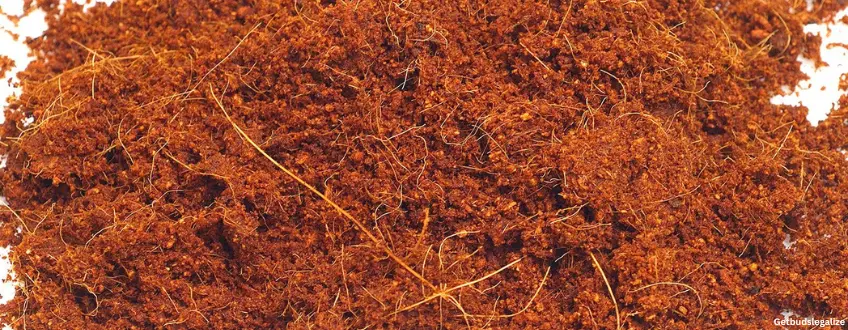
What is Coco Coir?
Coconut coir, often referred to as coco coir, is a natural coconut fiber extracted from coconut husks. It is widely utilized as a growing medium in hydroponic gardening.
Benefits:
- Excellent water retention and aeration: Coco coir retains moisture while also providing adequate oxygen to plant roots.
- Organic material: From coconut husks, coco coir is environmentally friendly and sustainable.
Downsides:
- Compression over time: Coco coir may become compacted after repeated use, affecting its ability to maintain proper aeration.
- Drainage issues: In some cases, coco coir may not drain effectively, necessitating the addition of other media to improve drainage.
Suitable Systems:
Coco coir can be used in drip systems, aquaponic systems, and ebb and flow systems.
3. Vermiculite
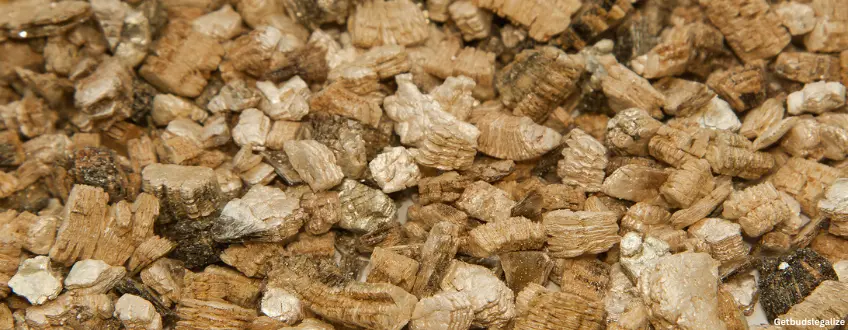
What is Vermiculite?
Vermiculite is a naturally occurring mineral that undergoes expansion when heated, resulting in a lightweight and absorbent material commonly used in hydroponic gardening.
Benefits:
- Water and nutrient retention: Vermiculite possesses excellent water and nutrient retention properties, ensuring consistent hydration and nourishment for plant roots.
- Lightweight: Its lightweight nature facilitates easy handling and manipulation in hydroponic systems.
Downsides:
- Poor drainage capacity: Vermiculite’s high water retention can lead to poor drainage, potentially causing waterlogged conditions detrimental to plant health.
- Danger of suffocating plants: Excessive use of vermiculite may restrict oxygen availability to plant roots, leading to suffocation and reduced growth.
Suitable Systems:
Vermiculite is commonly used in systems where drainage is not a primary concern, such as wicking systems, or as a component in soilless mixes for container gardening. However, caution should be exercised to prevent overuse and ensure adequate aeration for plant roots.
4. Rockwool
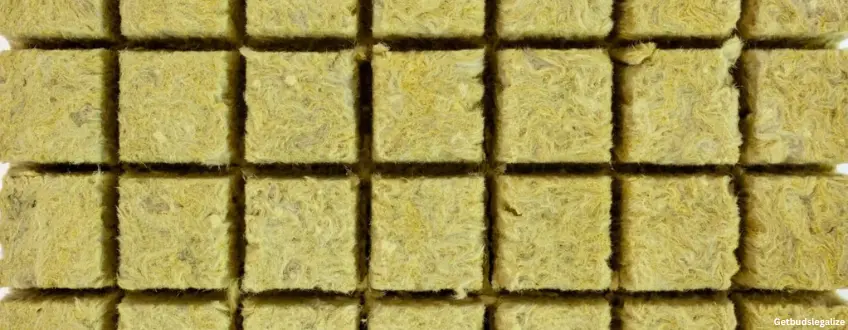
What is Rockwool?
Rockwool is a type of mineral wool made from basalt rock and chalk that is heated to high temperatures and spun into fibers. It is commonly used as a growing medium in hydroponics due to its excellent water absorption and aeration capacity.
Benefits:
- Great water absorption and aeration capacity: Rockwool efficiently retains water while also providing adequate aeration to plant roots, promoting healthy growth.
Downsides:
- Not environmentally friendly: Rockwool is not biodegradable and may contribute to environmental concerns.
- The dust is not good for health: Handling rockwool can release fine particles that may be harmful if inhaled.
- Disturbs the pH of the nutrient solution: Rockwool has a naturally high pH level, which may affect the balance of the pH of the nutrient solution, requiring adjustment.
Suitable Systems:
Rockwool can be used in a variety of hydroponic systems, including drip systems, ebb and flow systems, DWC systems, and NFT systems. It is versatile and adaptable to almost any hydroponic setup except for aquaponics.
5. Expanded Clay Pellets or Leca
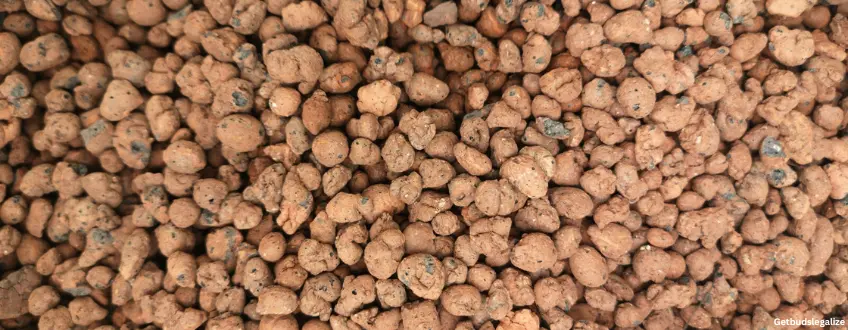
What are Expanded Clay Pellets?
Expanded clay pellets, also known as Leca, are small, porous balls made from clay that have been fired in a rotary kiln. This process causes the clay to expand, creating lightweight, highly porous pellets ideal for hydroponic cultivation.
Benefits:
- Reusable, and sustainable: They can be reused multiple times, making them a sustainable option for hydroponic gardening.
- Effective water drainage and air retention: The porous nature of clay pellets allows for excellent drainage while also retaining air within the growing medium, promoting healthy root growth.
Downsides:
- Poor moisture retention capacity: While clay pellets excel in drainage, they have a limited ability to retain moisture, requiring frequent watering in some setups.
- More expensive than other growing media: They tend to be more costly compared to some other hydroponic growing media, impacting overall system costs.
Suitable Systems:
Expanded clay pellets are versatile and can be used in various hydroponic systems, including drip systems, ebb and flow systems, and aquaponic systems.
6. Oasis Cubes
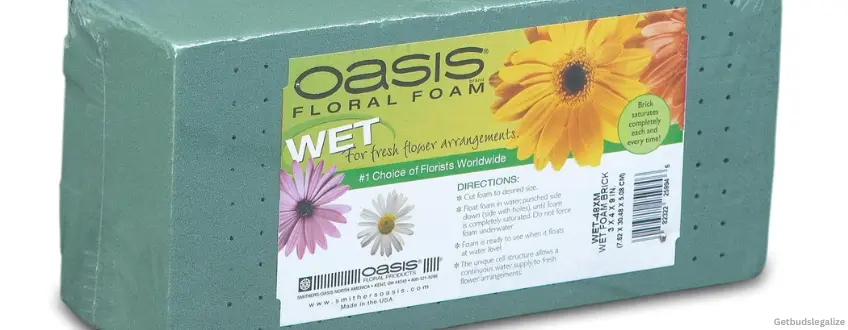
What is Oasis Cubes?
Oasis Cubes, also known as floral foam, are synthetic foam cubes designed specifically for hydroponic cultivation, commonly used during the germination and seedling growing phases.
Benefits:
- Inexpensive: They are cost-effective, making them accessible for hydroponic growers on a budget.
- Good water and air holding: They provide adequate moisture and air retention, promoting healthy root development.
Downsides:
- Not organic: They are synthetic and do not come from natural or organic materials.
- Not sustainable: Due to their synthetic nature, they are not environmentally sustainable.
Suitable Systems:
Oasis Cubes are primarily used for germination and seedling growing phases in various hydroponic systems.
7. Rice Husks

What are Rice Husks?
Rice husks, also known as rice hulls, are the outer covering of rice grains. They are utilized as a growing medium in hydroponics due to their unique properties.
Benefits:
- Sustainable: rice husks are a byproduct of rice processing, making them an eco-friendly option for hydroponic growers.
- Lightweight: They are lightweight, facilitating easy handling and transportation within hydroponic systems.
Downsides:
- Break down over time: rice husks gradually decompose, leading to a reduction in their structural integrity over extended periods.
- Not pH neutral: They may have an acidic pH, which can affect the overall pH balance of the hydroponic system.
Suitable Systems:
Rice husks are suitable for use in various hydroponic systems, including drip systems, deep water culture (DWC), and flood and drain systems.
8. Pumice

What is Pumice?
Pumice is a lightweight volcanic rock that forms when molten lava rapidly cools, resulting in a porous and highly absorbent material used in hydroponic gardening.
Benefits:
- Lightweight: Pumice is exceptionally lightweight, making it easy to handle and transport within hydroponic systems.
- Excellent air holding capacity: Pumice provides ample space for air retention, promoting optimal aeration for plant roots and fostering healthy growth.
Downsides:
- Lightweight for some hydroponic systems: While its lightweight nature is advantageous in many hydroponic setups, pumice may not provide sufficient support for plant roots in certain systems that require heavier media.
Suitable Systems:
Pumice is suitable for a variety of hydroponic systems, including drip systems, flood and drain systems (ebb and flow), and wick systems.
9. Growstones
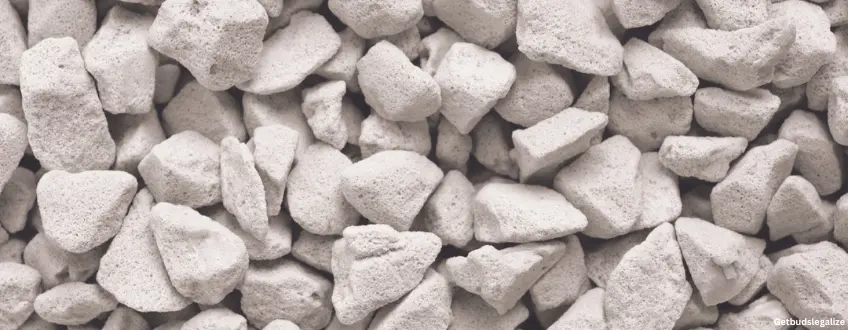
What are Growstones?
Growstones, crafted from recycled glass, serve as an innovative hydroponic growing medium. They are meticulously designed to foster ideal conditions for plant cultivation within hydroponic systems.
Benefits:
- Lightweight: Growstones are lightweight, making them easy to handle and transport within hydroponic setups.
- Good air-to-water ratio: They offer excellent aeration to plant roots, ensuring proper oxygenation for healthy growth.
- Sustainable: Growstones are made from recycled glass, contributing to environmental sustainability in hydroponic gardening practices.
Downsides:
- Cling to some roots: Growstones tend to cling to roots, which may cause damage to roots of certain plant types.
- Dust: There may be a small amount of dust present with Growstones, which can be a minor inconvenience during handling.
- More expensive: Growstones tend to be more expensive compared to some other hydroponic growing media options, which may impact overall cost.
Suitable Systems:
Growstones can be effectively used in various hydroponic systems, including drip systems, flood and drain systems, and NFT systems.
10. Sawdust
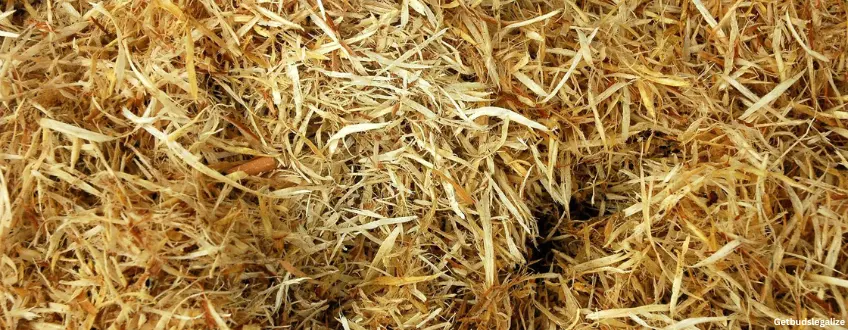
What is Sawdust?
Sawdust is fine particles of wood resulting from sawing or grinding wood.
Benefits:
- Organic and readily available: Sawdust is a natural byproduct of wood processing, making it widely accessible and environmentally friendly.
- Absorbent: Sawdust can absorb moisture, which can help regulate water levels in hydroponic systems.
- Cost-effective: Often available at low or no cost, sawdust can be an economical option for hydroponic growers.
Downsides:
- pH fickle: Sawdust can have variable pH levels, which may require adjustment to ensure optimal growing conditions for plants.
- Susceptible to rot: Over time, sawdust may decompose and harbor bacteria, potentially compromising plant health.
- May not be sterile: Sawdust obtained from untreated wood may contain microorganisms that could introduce pathogens to the hydroponic system.
Suitable Systems:
While sawdust can be used in hydroponic systems, it may be best suited for applications where pH can be carefully monitored and adjusted, such as wick systems or shallow water culture systems. Additionally, it may be advantageous to use sawdust in combination with other media to mitigate its potential drawbacks and optimize plant growth.
11. Wood Chips/Fibers
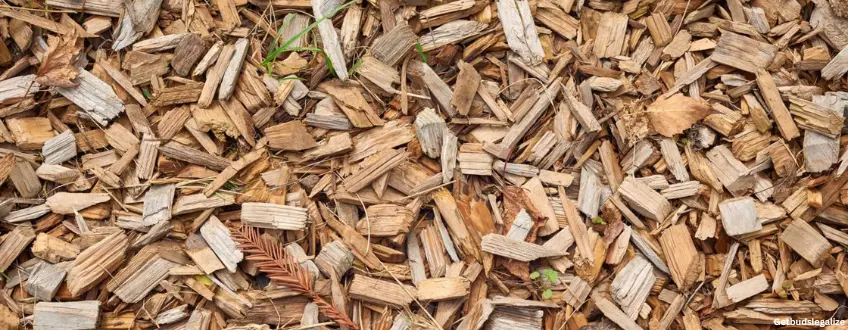
What is Wood Chips?
Wood chips and fibers refer to shredded or chipped wood material commonly used as a growing medium in hydroponics.
Benefit:
- Totally organic: Wood chips are derived from natural sources, making them an organic option for hydroponic growers.
- Able to retain water well: Wood chips can retain moisture, ensuring adequate hydration for plant roots.
Downsides:
- Biodegradable: Wood chips decompose over time, necessitating replacement and potentially affecting the stability of the growing medium.
- Can contain chemicals: Depending on the source and treatment of the wood, wood chips may contain chemicals that could be harmful to plants or introduce contaminants into the hydroponic system.
- May bring fungi, and pests: Wood chips may harbor fungi or pests, posing risks to plant health and system integrity.
Suitable Systems:
The suitability of wood chips/fibers in specific hydroponic systems may vary based on their characteristics and the requirements of the plants being grown. Further research and experimentation may be necessary to determine the optimal application of wood chips/fibers in hydroponic setups.
12. Peat Moss
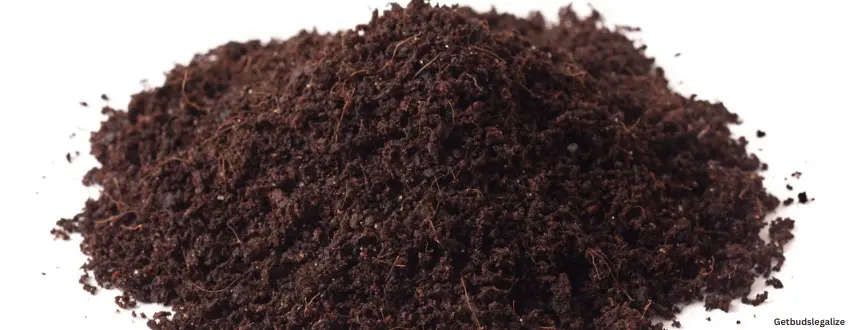
What is Peat Moss?
Peat moss is a natural, organic material derived from decomposed sphagnum moss and other organic matter found in peat bogs, commonly used as a growing medium in hydroponics.
Benefits:
- Good water and nutrient retention: Peat moss has excellent water-holding capacity, ensuring consistent moisture levels for plant roots. Additionally, it can hold onto nutrients, providing essential elements to plants.
- Doesn’t compact: Unlike some other growing media, peat moss maintains its structure over time, preventing compaction and ensuring proper aeration for plant roots.
- Doesn’t comprise harmful bacteria or weeds: Peat moss is sterile, minimizing the risk of introducing pathogens or weeds to hydroponic systems.
Downsides:
- Not renewable: Peat moss is a non-renewable resource, as its formation occurs over thousands of years in peat bogs. Harvesting peat moss can contribute to habitat destruction and environmental degradation.
- Low pH, acidic: Peat moss tends to have a low pH, which can require pH adjustment to ensure optimal growing conditions for plants.
- Relatively expensive: Compared to some other growing media options, peat moss can be more costly, impacting the overall cost of hydroponic cultivation.
Suitable Systems:
Peat moss is suitable for various hydroponic systems, including drip systems, nutrient film technique (NFT) systems, and wick systems. However, it may require pH adjustments to accommodate its acidic nature.
13. Sand
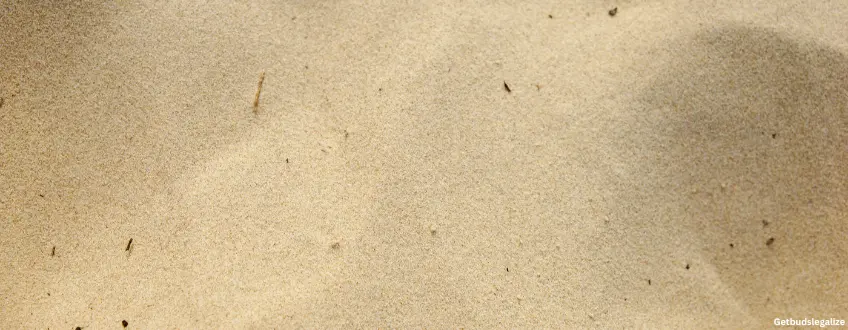
What is Sand?
Sand is a granular material primarily composed of finely divided rock and mineral particles, commonly used as a growing medium in hydroponic systems.
Benefits:
- Abundant and Accessible: Sand is readily available and inexpensive, making it a convenient option for hydroponic growers.
- Uniform Particle Size: Sand typically has a consistent particle size, which can contribute to stable root support.
- Natural pH Buffer: It tends to have a neutral pH, which can help stabilize the pH of the nutrient solution in hydroponic systems.
Downsides:
- Heavy: Sand can be heavy and dense, making it challenging to handle and transport, especially in large quantities.
- Low Aeration: Due to its compact nature, sand may provide limited aeration to plant roots, potentially hindering oxygen uptake.
- Small Particle Size: The tiny particles of sand may block certain types of hydroponic systems, particularly those with small openings or delicate mechanisms.
Suitable Systems:
Sand is commonly used in flood and drain (ebb and flow) systems, as well as in some DWC setups where its weight can provide stability to larger plants. However, it may not be suitable for systems that require high levels of aeration, such as aeroponic or NFT systems.
14. Gravel
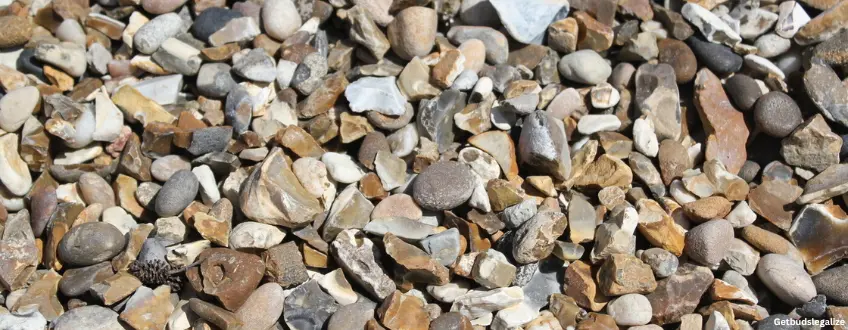
What is Gravel?
Gravel is a coarse, granular material composed of rock fragments, commonly used as a growing medium in hydroponic systems.
Benefits:
- Excellent drainage: Gravel provides ample drainage, preventing waterlogging and promoting healthy root growth.
- pH stabilization: It helps stabilize pH levels in the hydroponic system, contributing to optimal nutrient uptake by plants.
Downsides:
- Poor water retention: Gravel has low water retention capabilities, which may not be suitable for plants requiring consistent moisture.
- Not suitable for heavy plant roots: Gravel may not provide adequate support for heavy plant roots, leading to instability and potential damage.
- Heavy: Gravel is relatively heavy, making it less convenient for handling and transport compared to lighter media options.
Suitable Systems:
Gravel is commonly used in flood and drain (ebb and flow) systems, where it facilitates efficient water drainage and prevents water stagnation. However, it may not be ideal for systems requiring higher water retention or supporting heavy plant roots.
Correlated article:
Plenty to Choose From for your Hydroponic Garden
In conclusion, selecting the appropriate hydroponic growing media is a critical decision that can significantly impact the success of your hydroponic garden. Each medium comes with its own set of pros and cons, offering unique advantages and challenges to consider.
Whether you opt for the excellent aeration of perlite, the moisture retention of coco coir, or the versatility of rockwool, it’s essential to weigh these factors against your specific needs, the plants you’re cultivating, and your level of expertise.
By understanding the pros and cons outlined in this comprehensive guide, you can make an informed decision that maximizes the potential of your hydroponic setup, ultimately leading to healthier plants and higher yields.
FAQs about Hydroponic Growing Media
The best growing media for hydroponics depends on various factors such as the type of hydroponic system, plant species, and grower preferences. Some commonly used hydroponic media include Clay Pellets, coco coir, rockwool, and perlite. Each medium has its advantages and suitability for different setups and plants.
In aquaponics, where fish waste provides nutrients for plants, the growing media should be inert and provide good support for plant roots while allowing water and nutrients to circulate freely. Common choices for aquaponic growing include expanded clay pellets, gravel, and lava rock.
The best growing media for cannabis in hydroponic systems often include options such as coco coir, Clay Pellets, rockwool, or a mix of these mediums. Each has its advantages, such as excellent water retention, aeration, and stability for plant roots, making them suitable for cannabis cultivation.
Soilless systems cultivation, including hydroponics and aquaponics, offers several advantages:
- Optimized Nutrient Uptake: Growers have precise control over nutrient delivery, ensuring plants receive the ideal balance of essential elements for optimal growth.
- Water Efficiency: Soilless systems use less water compared to traditional soil-based methods, as water is recirculated and reused within the system.
- Space Efficiency: Soilless systems can be set up vertically or in compact spaces, allowing for high-density planting and maximizing yield per square foot.
- Reduced Pest and Disease Risk: Soilless systems cultivation reduces the risk of soil-borne pests and diseases, leading to healthier plants and reduced need for pesticides or fungicides.
- Faster Growth Rates: With direct access to water, oxygen, and nutrients, plants grown in soilless systems often exhibit faster growth rates and higher yields compared to traditional soil-based methods
A hydroponic growing medium is a substrate used to support the roots of plants in hydroponic systems. It provides stability, aeration, and moisture retention while allowing for the efficient uptake of water and nutrients.
There are various types of growing mediums, including:
- Clay pebbles/pellets
- Rockwool
- Coco coir
- Perlite
- Vermiculite
- Oasis cubes
- Growstones
- as rice husks
- Gravel
- Expanded clay aggregate (LECA)
- Sure To Grow
- And more…
Several factors should be considered, including:
- Water retention capabilities
- Aeration properties
- pH stability
- Nutrient holding capacity
- Reusability
- Environmental impact
- Cost
- Compatibility with the chosen hydroponic system
- Availability
Many hydroponic growing mediums are reusable, such as Clay Pellets, rockwool, coco coir, and perlite. With proper sterilization and maintenance, these mediums can be cleaned and reused for multiple growing cycles, making them cost-effective options for growers.
The preparation process may vary depending on the type of growing medium. However, common steps include rinsing to remove dust or debris, soaking to hydrate the medium, and adjusting pH if necessary. Some mediums, like rockwool or coco coir, may require pre-treatment before use.
Yes, growers often create custom blends of hydroponic growing mediums to optimize the characteristics of each component. For example, combining clay pebbles with coco coir can balance aeration and water retention. However, it’s essential to consider compatibility and the specific needs of the plants being grown.
The disposal method depends on the type of medium used. Biodegradable options, such as coco coir or certain types of rock wool, can be composted or disposed of in regular waste. Non-biodegradable mediums, like clay pebbles or perlite, can typically be cleaned and recycled or disposed of in designated waste streams.
Some hydroponic growing mediums, such as coco coir or certain types of rock wool, are considered suitable for organic cultivation. However, it’s essential to verify the organic certification of the medium and ensure compliance with organic growing standards.
Yes, hydroponic growing mediums can be used with a wide range of plants, including vegetables, herbs, flowers, and cannabis. However, it’s essential to select a medium that meets the specific needs of the plant species and the requirements of the chosen hydroponic system.
Hydroponic growing mediums are available at specialty hydroponic stores, garden centers, online retailers, and agricultural suppliers. It’s essential to choose reputable sources to ensure the quality and consistency of the medium.
The choice of grow media for hydroponic propagation depends on various factors such as the type of plants being propagated, the specific hydroponic system used, and environmental conditions. However, some commonly used and effective include:
- Rockwool: Rockwool cubes or plugs are widely used for starting seeds or rooting cuttings in hydroponic systems. They provide good water retention and aeration, promoting healthy root development.
- Perlite: Perlite is a lightweight and porous material that offers excellent drainage and aeration for plant roots. It is often used in conjunction with other media for hydroponic propagation.
- Coco Coir: Coco coir is a natural, fibrous material derived from coconut husks. It retains moisture well and provides good aeration, making it suitable for propagating a variety of plants hydroponically.
- Oasis Cubes: Oasis cubes are foam-like cubes specifically designed for hydroponic propagation. They provide good support for root growth and can be easily transplanted into larger hydroponic systems.
- Vermiculite: Vermiculite is a lightweight, sterile material that retains moisture and provides good aeration for plant roots. It is commonly used as a propagation medium for starting seeds in hydroponic systems.
ILGM Fertilizer

- From seedling to harvest, give your plants everything they need.
- Enough for feeding at least 5 plants.
- Discounted Package Deal
- Works well in soil, hydroponics, and other growing mediums.
- The best way to treat your plants
ILGM Plant Protector

- Protect your cannabis from diseases and harmful pests.
- Contains three 20 ml bottles.
- Enough supplies to protect 20 plants.
- It can be used in soil, hydroponic, and all other growing mediums.















